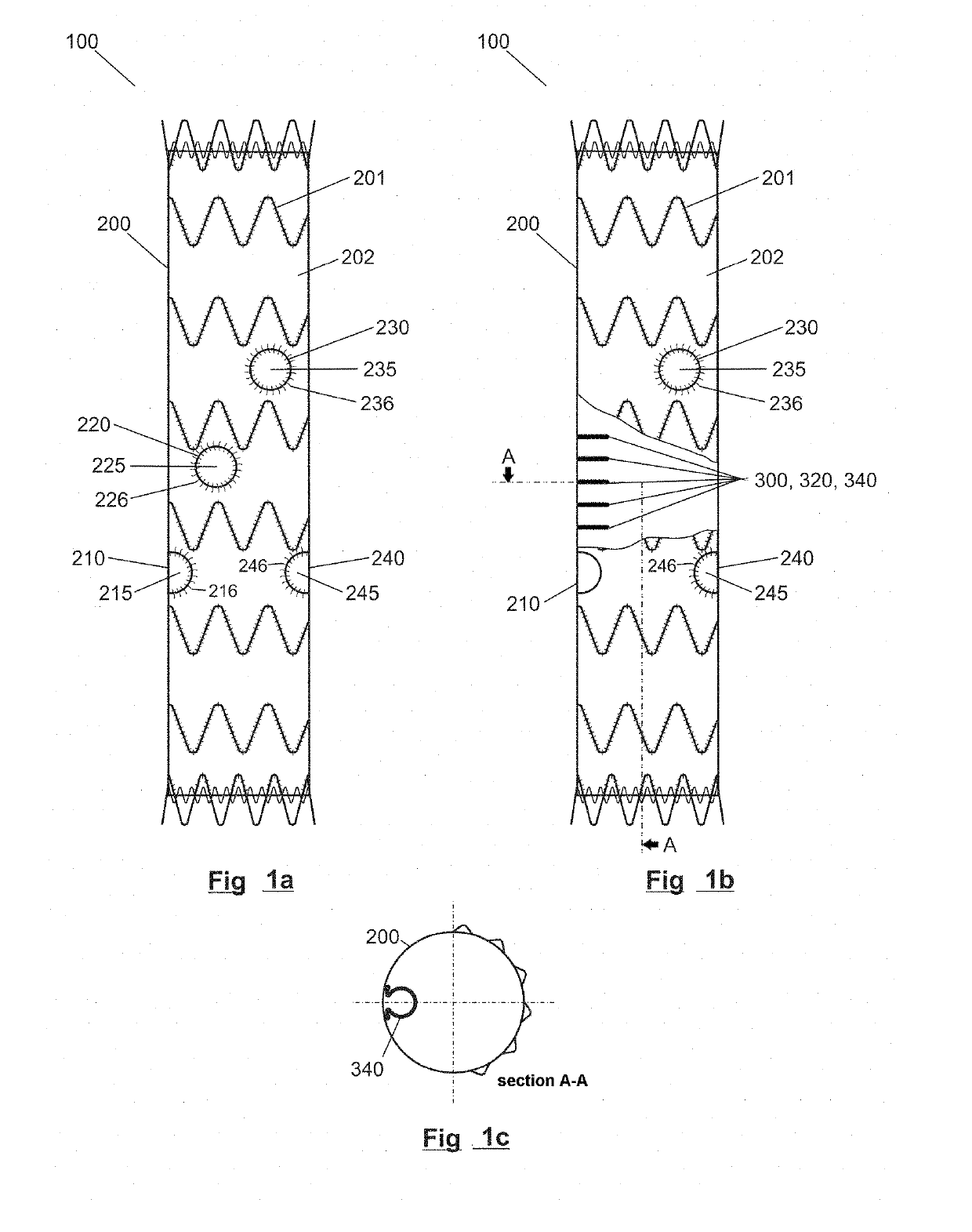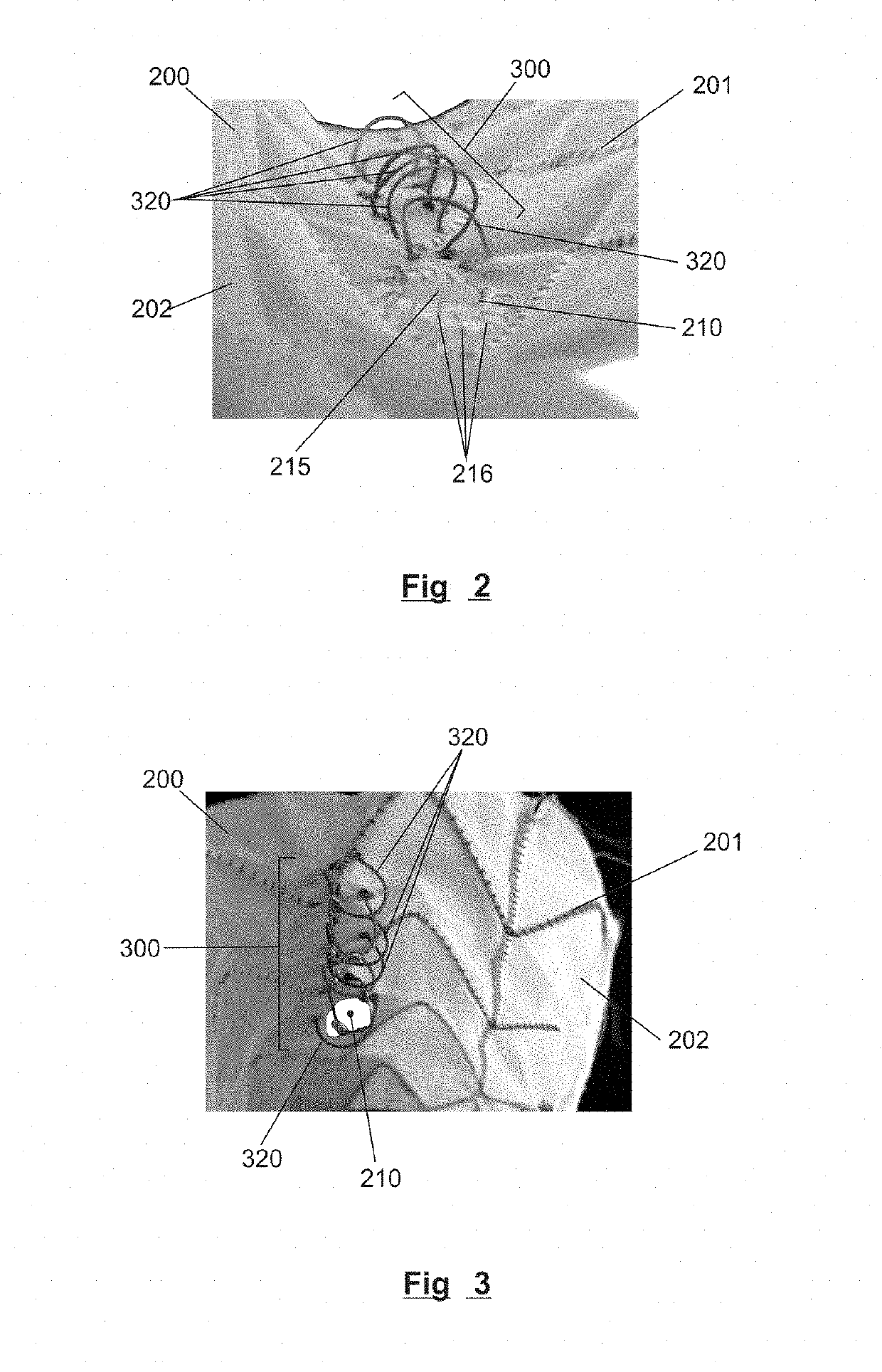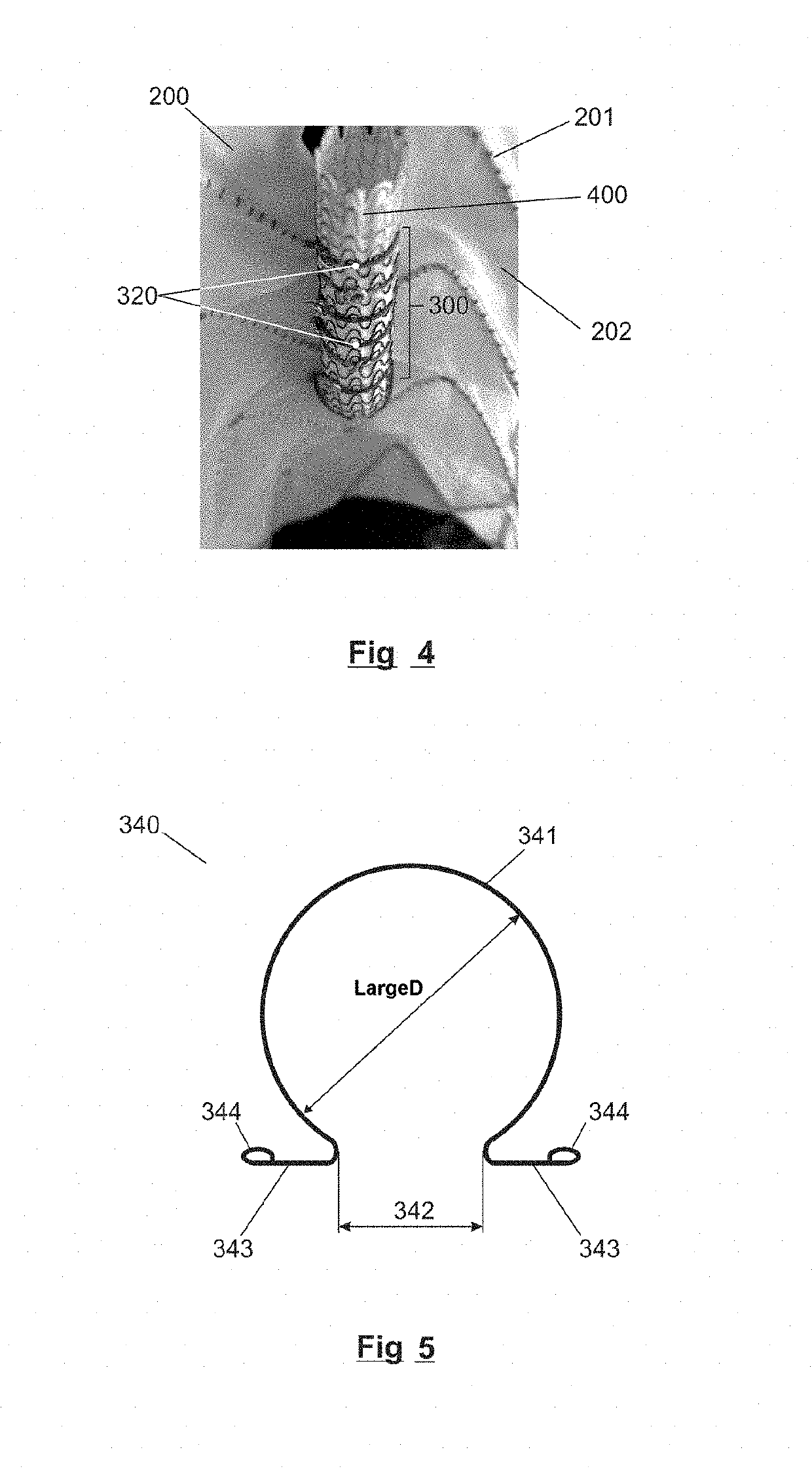System for branches for endovascular endoprostheses and corresponding endoprosthesis for endovascular treatment of aortic aneurysms or dissections
- Summary
- Abstract
- Description
- Claims
- Application Information
AI Technical Summary
Benefits of technology
Problems solved by technology
Method used
Image
Examples
example 1
Thoracic Aneurysm at the Level of the Aortic Arch
[0069]In the case of the use of using an endoprosthesis (200) for the treatment of aneurysms of the thoracic aorta at the level of the aortic arch, up to 3 internal channels may be required.
[0070]A first channel would begin at 15 mm (below) from the top of the endoprosthesis (200), on the internal anterior face, extending for 25 mm up to its corresponding fenestration (230). As already described above, said first channel may be made either with flexible fixing and conducting arches (320) or with rigid fixing and conducting rings (340), in a number of 5, positioned longitudinally each, and with 8 to 12 mm in larger diameter (LargerD). The fenestration (230) is in this case 7 to 11 mm in diameter and is initially closed by an occlusion (235) of the same material as the coating (202) of the endoprosthesis (200), said occlusion (235) being sutured around the fenestration (230) by a suture (236) made with 6.0 or 7.0 polypropylene cardiovas...
example 2
Thoracic-Abdominal Aneurysm
[0079]In the case of the use of using an endoprosthesis (200) for the treatment of thoracic-abdominal aneurysms of the aorta, up to 4 internal channels may be required.
[0080]A first channel would begin at 50 mm (below) from the top of the endoprosthesis (200), on the internal anterior face, extending for 25 mm up to its corresponding fenestration (230). As already described above, said first channel may be made either with flexible fixing and conducting arches (320) or with rigid fixing and conducting rings (340), in a number of 5, positioned longitudinally each, and with 6 to 8 mm in large diameter (LargeD). The fenestration (230) is in this case 5 to 7 mm in diameter and is initially closed by an occlusion (235) of the same material as the coating (202) of the endoprosthesis (200), said occlusion (235) being sutured around the fenestration (230) by a suture (236) made with 6.0 or 7.0 polypropylene cardiovascular suture. Said occluded fenestration (230) i...
PUM
 Login to view more
Login to view more Abstract
Description
Claims
Application Information
 Login to view more
Login to view more - R&D Engineer
- R&D Manager
- IP Professional
- Industry Leading Data Capabilities
- Powerful AI technology
- Patent DNA Extraction
Browse by: Latest US Patents, China's latest patents, Technical Efficacy Thesaurus, Application Domain, Technology Topic.
© 2024 PatSnap. All rights reserved.Legal|Privacy policy|Modern Slavery Act Transparency Statement|Sitemap



